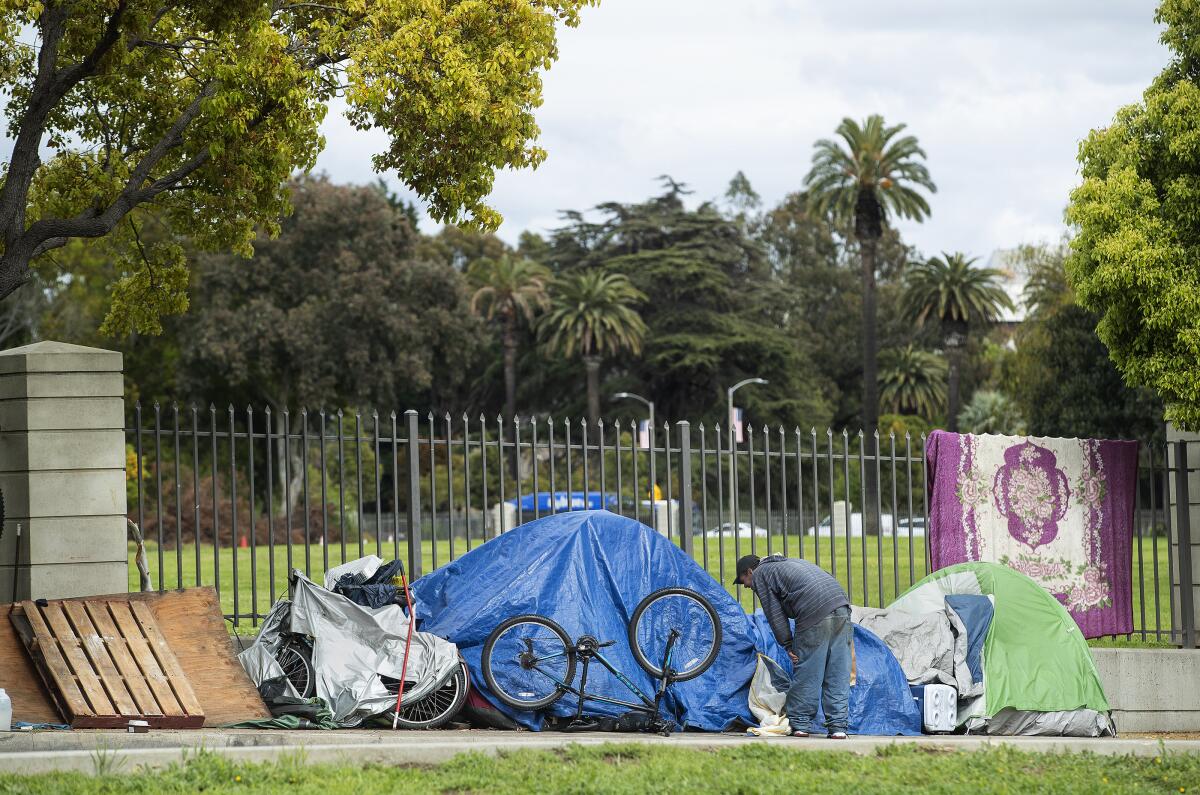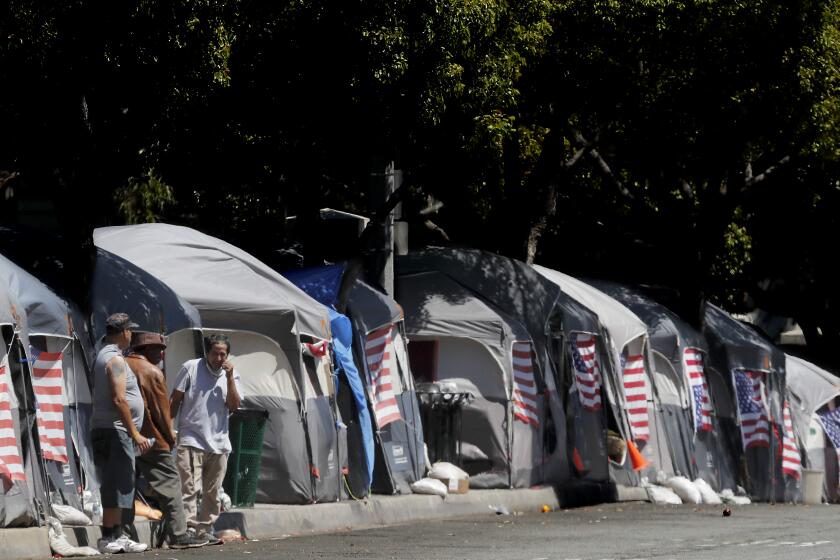Editorial: The VA vowed to house more than 500 homeless veterans by the holidays. How did it do?

After Veterans Affairs Secretary Denis McDonough toured the homeless encampment of about 40 people, mostly veterans, who lived on the sidewalk outside the gated grounds of the West L.A. VA campus in October, he went back to Washington and vowed to house not just them but 500 other homeless veterans as well.
“Every once in a while you run across these phrases in the English language that shouldn’t really exist. I think one of those phrases is ‘homeless veteran,’” he said at a news conference. “As long as I’m here, I’m going to do everything I possibly can to get them into houses.”
In fact, the phrase “homeless person” should not exist in the English language. McDonough committing to housing the homeless veterans — in the encampment by Nov. 1 and the other 500 by the end of 2021 — was a welcome promise.
The VA has the financial resources to house homeless vets. It needs to get out there and connect with them.
So how did he do? The short answer is: not bad.
The VA says it housed 667 veterans in the L.A. area between Oct. 1 and the end of December. At least 542 of them are from Los Angeles County (the others are from Southern and Central California counties). Of the L.A. contingent, 221 made it into permanent supportive housing. An additional 321 are in what the VA calls transitional or temporary housing, or the mental health residential rehabilitation facility on the grounds of the West L.A. VA campus.
Most of the people who lived in the sidewalk encampment are now in tents on the sanctioned campsite on the VA grounds (where they have food, toilets and services). Some are living in the new tiny houses that have been installed on the campus or in VA-subsidized motels temporarily.
Getting nearly 700 people off the streets and inside is impressive — and the agency did it in two months. That’s particularly significant for the VA, a big, lumbering bureaucracy that for years was slow to act on housing homeless veterans in Los Angeles.
As of the last homeless count in L.A. County in 2020, there were 3,900 homeless veterans — although VA officials said last fall that they had housed 1,283 veterans from Oct. 1, 2020, to Sept. 30, 2021. Nonetheless, Los Angeles County is still considered to have the largest concentration of homeless veterans in the nation.
The only way to fix that problem is to get people into permanent housing. A homeless person in temporary housing is still a homeless person.
The VA has vast resources — specially earmarked vouchers for rent for poor and homeless veterans, and the funding for personnel to shepherd homeless people through the paperwork. But it needs more housing navigators and outreach workers.
It can be difficult for veterans, even with vouchers, to find affordable apartments. Some landlords are reluctant to rent to homeless people (although housing navigators and service providers work with landlords to accommodate their concerns). But there are several hundred available units in apartment buildings across the county that are reserved for veterans who qualify for federally funded housing vouchers.
For the most part, veterans don’t know those empty apartments exist. But there are also instances in which veterans turn them down — they don’t like the location or want a one-bedroom instead of a studio. The Los Angeles Homeless Services Authority is planning to put on housing fairs and take veterans on tours of available of units. Housing homeless people — veterans or otherwise — is challenging when they have lived in one place of their choosing under their own rules, even when it’s outside.
Service providers must, as a Rand study of homeless veterans counsels, pay attention to what veterans want out of a neighborhood or a specific apartment. When homeless people don’t like where they are living, they leave. On the other hand, when they are stably housed, their mental health and quality of life improves, as all social service and housing providers will tell you.
The VA needs to focus on getting veterans it has housed temporarily, and those it has not, into permanent housing. That also includes stepping up the pace of building a planned community of 1,200 units of permanent housing on the VA campus. Transitional housing may get people off the street, but they are still homeless — until they have a permanent home.
More to Read
A cure for the common opinion
Get thought-provoking perspectives with our weekly newsletter.
You may occasionally receive promotional content from the Los Angeles Times.











